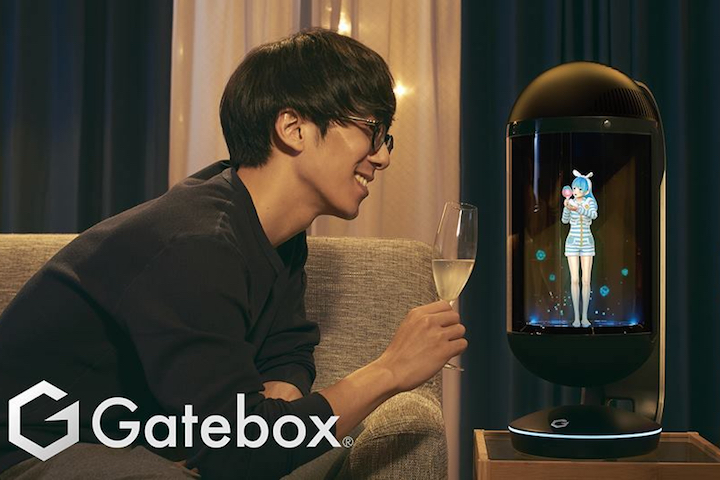We are one step closer to a sci-fi future where we can choose to live with artificially intelligent robots and digital humans. This is the Gatebox and at its most basic, it’s a piece of Internet-of-Things (IoT) technology for controlling your smart home. However, look closer and you’ll find that inside lives Hikari Azuma, an artificially intelligent virtual character ready to share your life. Moving beyond our simple interactions with Alexa or Google Home, Hikari-san will encourage you throughout the day, welcome you home, remember anniversaries, and ultimately, be your own digital companion.
If this sounds familiar, you’re right. Gatebox first made headlines in 2016 and 2017 with a limited first-run of the Gatebox. Now, following acquisition by messaging and technology platform Line, a revised version of the product is ready for mass production and is available for pre-order in Japan. The Gatebox device has been redesigned for a more space-age and home-friendly look, plus it has a motion detector and a camera for face recognition, which allows Hikari to recognize and respond to you.
The Gatebox is connected to the internet so it can control smart home appliances and perform other tasks such as providing news and weather updates. Additionally, an infrared blaster means non-smart products can also be controlled. While all this is helpful, it’s the Hikari Azuma character that makes Gatebox so special. The projection itself looks considerably more detailed and far brighter (Hikari means “light,” or “brilliance” in Japanese, so it’s appropriate) than the limited edition models first released.

Initially, the software version will be the same as the model released before, but in December an updated version will come with greater capacity for interaction, including the ability to share a toast and celebrate anniversaries, as seen in the promotional video. She smiles when she “sees” you, and greets you after arriving home. While some will find the concept creepy, and the video does little to help avoid this; there is considerable value in providing company for those who live on their own. It’s also impossible to deny the sci-fi attraction of interacting with a friendly digital creation on a daily basis.
Line will also become more deeply involved, and will integrate its own Clova A.I. platform into Gatebox in the future. Line is very interested in the concept of artificially intelligent digital creations we can live with, and for that reason bringing Clova and Gatebox together makes sense. While A.I. devices like this are very different to Google Home or an Amazon Echo, other companies are working on competing products. South Korea’s SK Telecom showed the HoloBox at Mobile World Congress this year, with a custom made digital human called Wendy inside, who performed in a similar way to Gatebox.
The new Gatebox GTBX-100 is available as a pre-order in Japan now, with deliveries set to begin in October, at a cost of around $1,330. Gatebox will not ship outside Japan at the moment, but it does seem additional countries will be added in the future. However, this may take time because both Hikari and Clova only speak Japanese at the moment.



